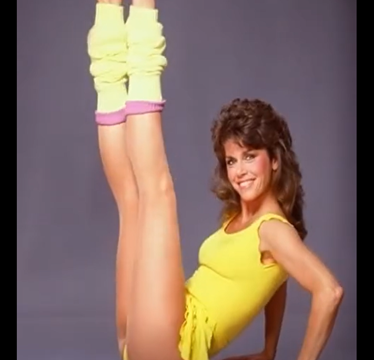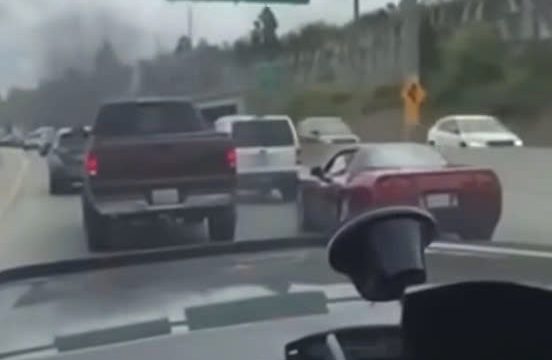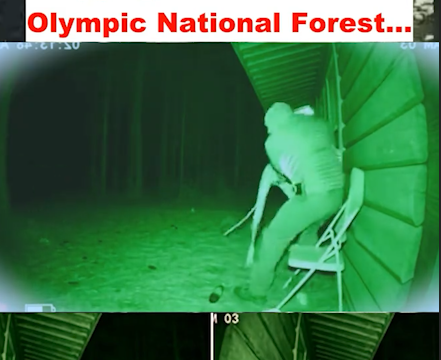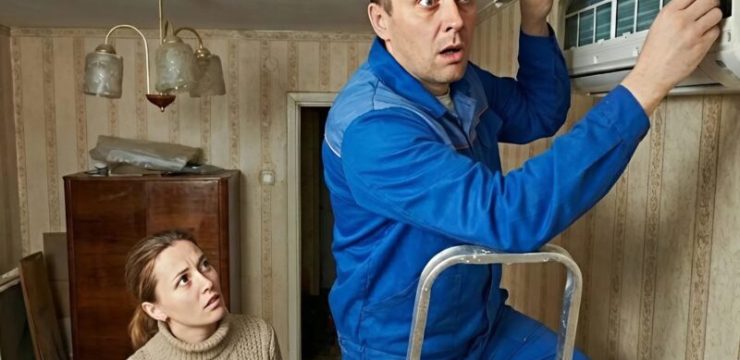I work at a chemical manufacturing plant on the outskirts of Bellingham, Washington, a place that feels like it lives on the border between town life and untouched wilderness. The factory sits at the foothills of the Cascades, separated from the Nooksack River by a thin stretch of forest that somehow survived development. Most days, when the weather isn’t too harsh, I walk home along a dirt trail that winds beside the river instead of heading straight for the parking lot like most of my coworkers. It’s my way of shaking off the noise, the fluorescent lights, and the routine fatigue of long shifts.
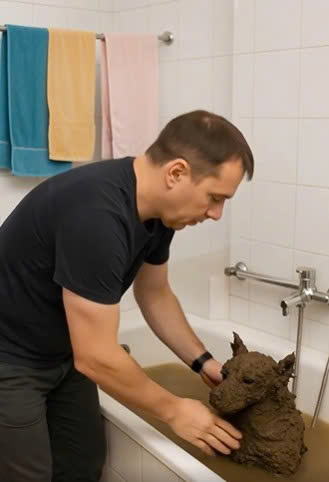
On an October evening filled with cold mist and the smell of damp leaves, I was making my usual walk after a ten–hour day. Everything felt quiet, the kind of stillness the Pacific Northwest settles into right before winter arrives. I was almost at the bridge when something near the riverbank caught my eye—a small lump, half–buried in mud, barely noticeable through the fog. At first I assumed it was nothing more than debris washed ashore after several days of heavy rain. But then it moved, just enough to stop me in my tracks.
As I walked closer, my boots sinking into the mud, I realized the shape was a living creature. It was tiny, trembling, and so covered in dirt that it blended into the riverbank. I knelt beside it and finally saw matted fur beneath the grime. The little body shook with shallow breaths, and my heart clenched at the thought of someone abandoning a helpless animal like this.
“Hey there,” I whispered. “It’s okay. I’ve got you.”
I lifted the creature gently. It was surprisingly heavy for its size, and when it whimpered softly, I instinctively wrapped it in my work jacket and held it close to my chest to warm it. I hurried home, all the while reassuring it in a low voice, hoping it could sense safety in my tone. When I finally reached my small rental house, I turned up the heat, filled the bathtub with warm water, and set the trembling bundle on a towel.
The moment I placed it in the water, the dirt slid off in dark streaks. But instead of revealing soft puppy fur, something else emerged—a thick, coarse gray coat, nothing like any dog I’d ever seen. As I washed away the mud, a strange uneasiness settled in. The ears were pointed and longer than a puppy’s. The paws were much larger than they should have been. And then I saw the claws—curved, sharp, and built for the wild.
When its eyes met mine, my breath caught. They were brilliantly amber, glowing almost gold under the bathroom light, ancient and untamed. This wasn’t a puppy at all. It was a wolf cub.
For a moment, fear and disbelief washed over me. I stepped back, holding the towel with shaking hands. The cub didn’t seem frightened, but its presence demanded respect. Unsure what to do, I called the only person I could think of—Dr. Marcus Webb, a local veterinarian I’d met a few times. I told him I had found an injured “dog” and asked if he could see it immediately.
@_the_clean_girlI Found Puppies in the Sewer!
When I arrived at his clinic and he first laid eyes on the cub, his reaction confirmed what I already knew.
“Alex,” he said quietly. “This is a wolf cub.”
He examined it thoroughly, explaining that it had likely been separated from its pack during the recent flooding. The cub was exhausted and dehydrated, but stable. He showed me how to feed it a special formula and reminded me not to treat it like a pet—not to bond with it or comfort it more than necessary—because it needed to return to the wild.
The plan was simple: keep it warm overnight and bring it back to the exact place where I found it at first light. Wolves rely heavily on scent and sound, and if its pack was still in the area, they would search for it.
That night, the cub slept in a box beside my bed. Every so often it made small, soft sounds—neither howls nor barks, something in between. Each time I checked on it, those amber eyes looked at me with an awareness that felt deeper than any domesticated animal I’d ever encountered.
At dawn, under a thick gray sky, I returned to the riverbank with the cub. When I opened the box, it hesitated for a moment before stepping out. It sniffed the wind, glanced back at me, and then disappeared into the brush.
I stood listening, hoping, waiting.
Then it came—a distant, powerful howl from somewhere deep in the trees. A few seconds later, a smaller, higher call answered. Relief washed through me in a way I can’t fully explain. The cub had found its family. Or they had found it.
Later that morning, I called Dr. Webb to tell him what happened. He assured me I had done the right thing. In the following weeks, I walked by the river more often. I never saw the pack, but sometimes I spotted large paw prints and smaller ones trailing beside them. I liked to imagine they belonged to the cub I had carried home that evening, now stronger, growing into the wild life it was meant for.
Some experiences stay with us not because they change our lives dramatically, but because they remind us that humans and the natural world are connected in ways we don’t always see. For one night, that connection felt real and close—a brief moment when a small lost creature crossed into my world before returning to its own.
And that was enough.
